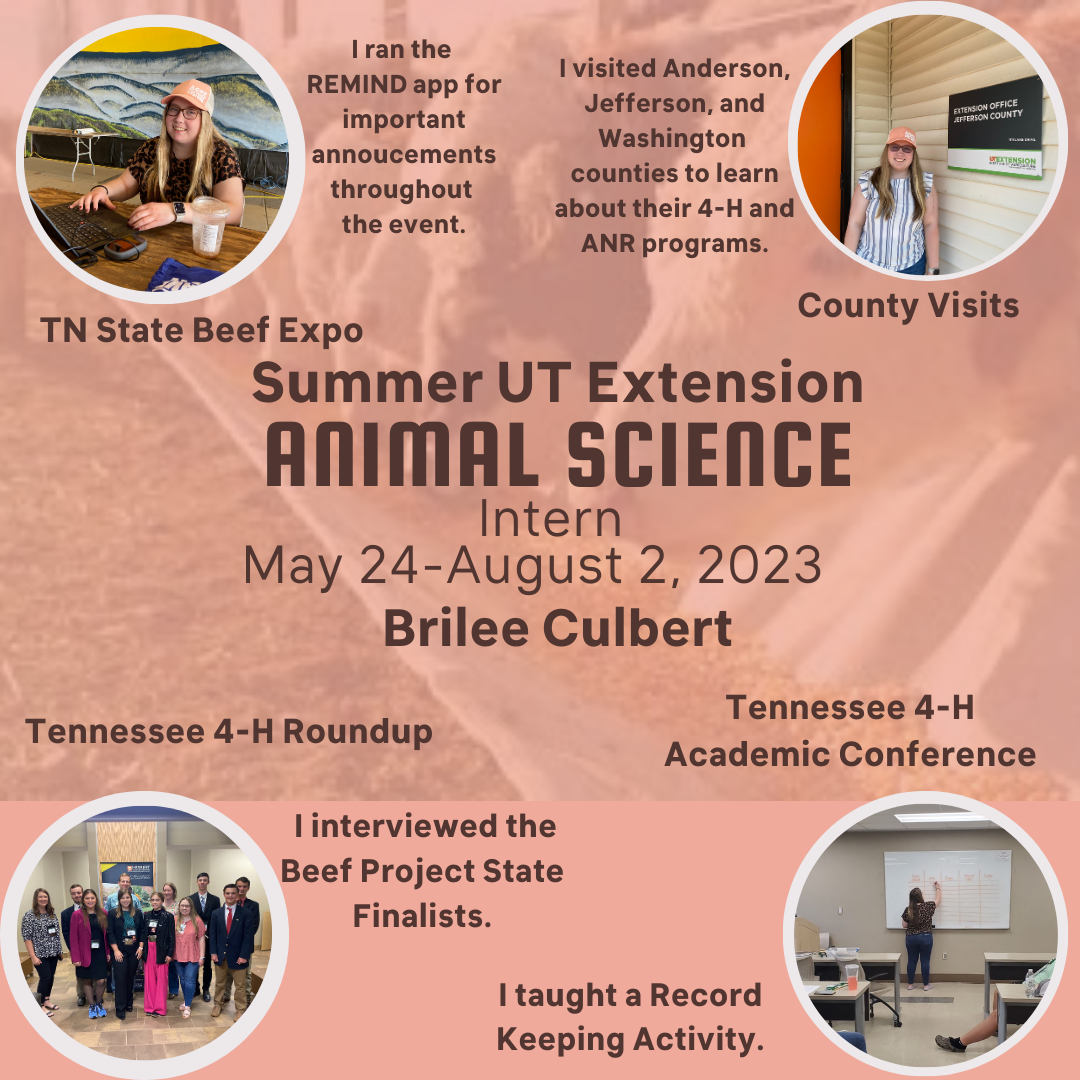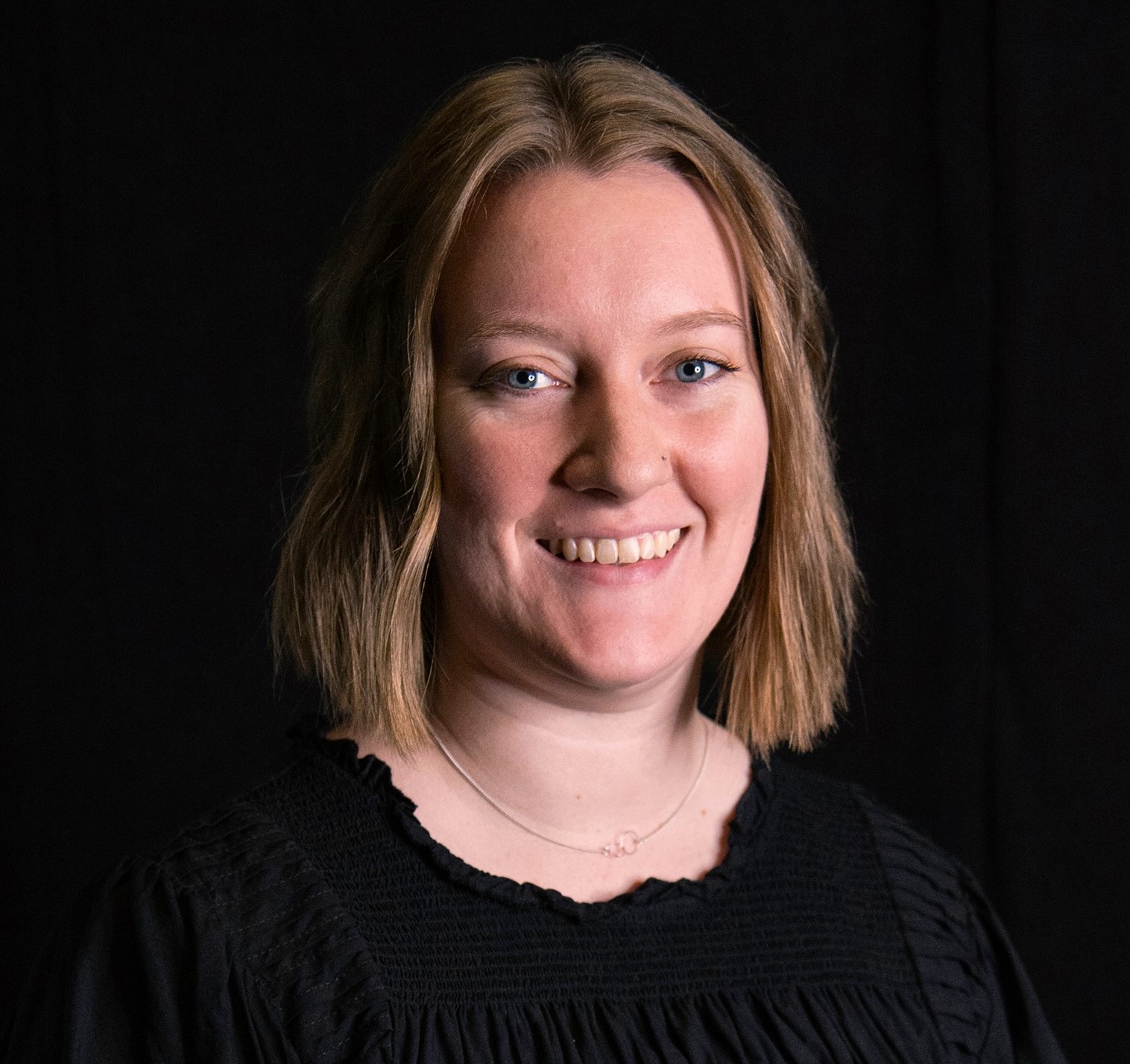

Dr. Katie Mason
Assistant Professor and Extension Beef Cattle Nutrition Specialist
Department of Animal Science
P: 865-974-8941
Article by: Brilee Culbert

I have always been interested in agriculture. My brother and I grew up on a small farm in Carter County raising commercial beef cattle, goats and sheep. As a 5th grader, I remember teachers asking us where we wanted to go to college. Every time, I immediately said UT-Knoxville because I knew that there was a strong agriculture program here. It wasn’t until I started high school when I joined my local 4-H club and went to conferences and competed in judging teams that I wanted to major in agricultural education. Now, I am a senior at the University of Tennessee majoring in Agricultural Leadership, Education, and Communications with a concentration in Education. With this degree, I hope to work as an Extension Agent or as an agriculture educator.
Last January, I was scrolling through Facebook and a post from the UT Beef and Forage Center spiked my attention to apply for this internship with the Animal Science department. I think I began working on my application right away because I had been thinking about a summer internship since the prior November. In March, I got word from Dr. Katie Mason that I was offered the position and I started in late May. Then, I never knew how much of an impact that 10 weeks could have on me and my professional development.
I started out in my office by catching up on some knowledge about nitrates in beef cattle nutrition. This was something that I needed to learn quickly as a majority of my project would be about the Effect of Ensiling on Nitrate Levels in Sorghum-Sudangrass. After brushing up on nutrition, I took what I learned and wrote my first blog post for the UT Beef and Forage Center called “Check It Before You Cut It”. I then moved on to making infographics for National Forage Week.
Perhaps my favorite opportunities throughout the internship were working with 4-H youth. The Academic Conference challenged me to come up with a Record Keeping Activity for the Beef project. The activity used craft rocks to represent cows, bulls, and calves. Each of the rocks were labeled with blue and pink stickers as well as a tag number. The students were tasked with matching the calves with the correct mother cow and bull. At the end of the activity, we had a discussion about the importance of record keeping on a cattle operation and how their home operations keep records of their cattle.
Aside from working with 4-H youth programs, one of the main projects of this internship was assisting with data retrieval for a research trial evaluating nitrate content of ensiled forages. Over-fertilizing during periods of drought can cause elevated levels of nitrates in forages. This is especially problematic when using warm-season annuals. If cattle eat forage high in nitrates, the nitrates replace oxygen molecules in their blood which can lead to death. Though cattle can consume forage with nitrate levels up to 2,500 ppm, special care should be taken above the threshold, especially in pregnant cows. There is some evidence that indicates that ensiling can reduce the level of nitrates in forage after harvest. Other advantages of ensiling include: less field and harvest loss than occur with hay and less likelihood of weather damage during harvest. The objective of this project was to determine whether there is a decrease in nitrate levels after ensiling sorghum-sudangrass. After the second harvest, we expect to see a decrease in nitrate levels after the ensiling process, and hypothesize that the decrease may be relative to the N rate treatment.
As a whole, it’s reassuring to look back at how many people I’ve met in such a short amount of time. I have never been involved in the animal science department at UTK until now even though it’s one of my favorite topics in agricultural education. Communicating with people has been a vital part of this whole experience. Traveling the state for the State Horse Show or the Beef Expo, going on three county visits, and learning more about UTIA’s AgResearch has shaped a network for me as a future professional in the agriculture field. I hope to put a few of the things I have learned into practice working for UT Extension in the future as a 4-H Extension Agent or as a high school agriculture educator. Advocating for the agriculture industry is one of my favorite things to do and I cannot wait to share what I have learned.
